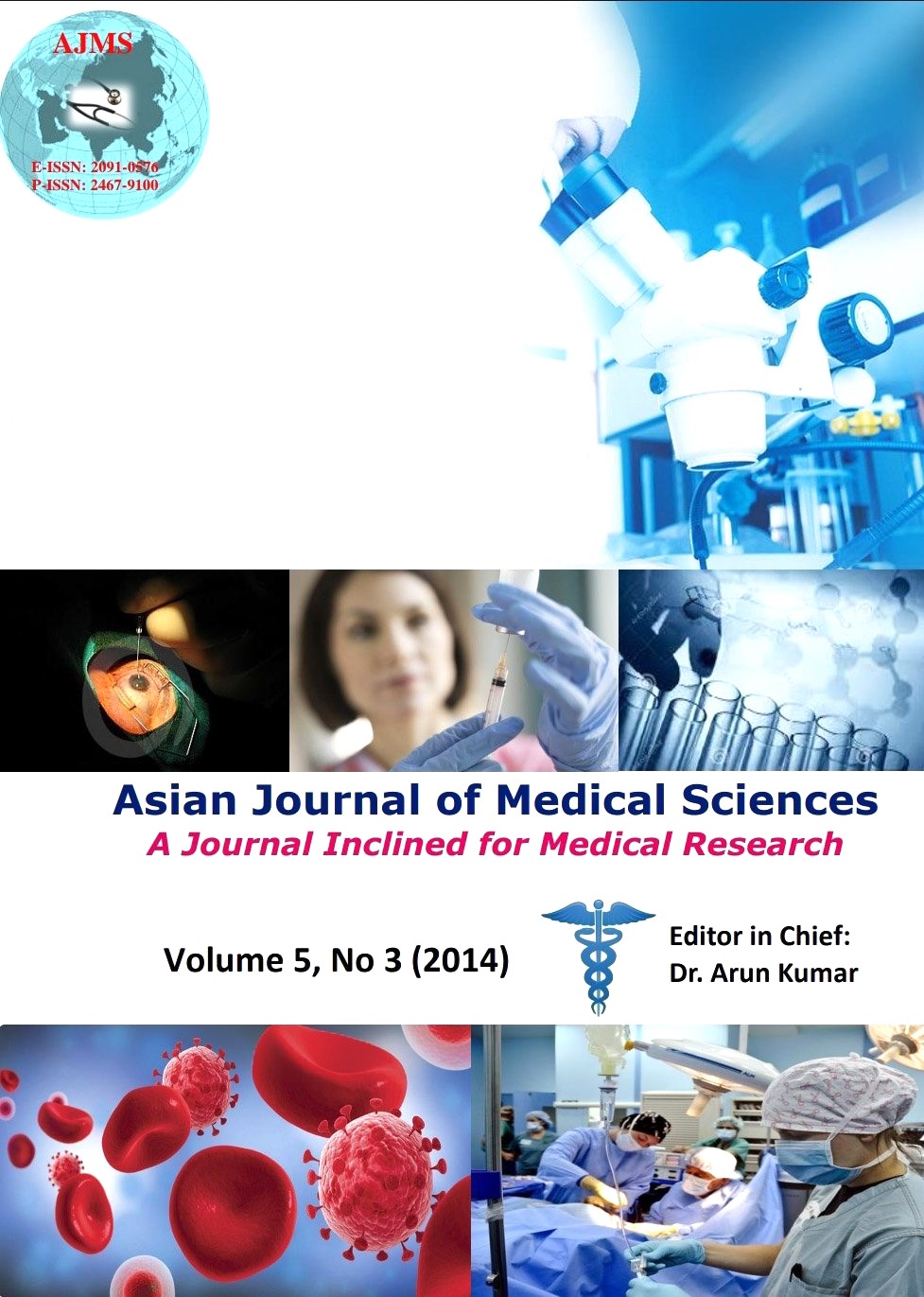Dyslipidemia associated with subclinical hypothyroidism in Eastern Nepal
Keywords:
Lipid Profile, Thyroid Hormones, Subclinical HypothyroidismAbstract
Objectives: The present study was conducted aiming to investigate lipid profile in patients with subclinical hypothyroidism as compared to age and sex matched controls.
Methods: The study population consisted of total 80 subjects; 40 patients (cases) and 40 controls. Serum free tri-iodothyronine (fT3) and free thyroxine (fT4) were estimated by microplate competitive enzyme immunoassay, and thyroid stimulating hormone (TSH) measured by sandwich enzyme immunoassay. Lipid profile tests: Total Cholesterol, triglycerides, high density lipoprotein (HDL) cholesterol were estimated by enzymatic methods and low density lipoprotein cholesterol (LDL) was calculated by Friedewald’s formula.
Results: Significant differences were observed between lipid parameters in case Vs controls: total cholesterol (4.9±1.1 Vs 4.3±1.0 mmol/L, P=0.03), triglycerides (1.9±0.7 Vs 1.6±0.6 mmol/L, P=0.02) and LDL cholesterol levels (3.5±1.1 Vs 2.9±0.9 mmol/L, P=0.02). In case Vs controls no significant differences were observed between HDL Cholesterol (1.1±0.2 Vs 1.1±0.7 mmol/L, P=0.07), VLDL (0.9±0.4 Vs 0.8±0.3 mmol/L, P=0.1) and Cholesterol/HDL ratio (4.48±1.40 Vs 4.06±0.89, P=0.118). Elevated TSH level were found in cases Vs controls (12.42±7.08 Vs 2.69±0.20 mIU/L, P=0.01) which was statistically significant. The subjects on control group were euthyroid, however increased fT3 (3.9±0.8Vs 4.6±0.8 pmol/L, P=<0.01) and fT4 (17.1±3.9Vs 21.2±.3.7 pmol/L, P=<0.01) values were observed in controls than cases, which was statistically significant.
Conclusion: The results of the present study suggest that cases of subclinical hypothyroidism are at risk of dyslipidemia as compared to controls. Large population based studies are needed to generalize these findings and establish the therapeutic guidelines for implementing lipid lowering agents in subclinical hypothyroidism.
Asian Journal of Medical Science, Volume-5(3) 2014: 22-25
http://dx.doi.org/10.3126/ajms.v5i3.9251
Downloads
Downloads
Additional Files
Published
How to Cite
Issue
Section
License
Authors who publish with this journal agree to the following terms:
- The journal holds copyright and publishes the work under a Creative Commons CC-BY-NC license that permits use, distribution and reprduction in any medium, provided the original work is properly cited and is not used for commercial purposes. The journal should be recognised as the original publisher of this work.
- Authors are able to enter into separate, additional contractual arrangements for the non-exclusive distribution of the journal's published version of the work (e.g., post it to an institutional repository or publish it in a book), with an acknowledgement of its initial publication in this journal.
- Authors are permitted and encouraged to post their work online (e.g., in institutional repositories or on their website) prior to and during the submission process, as it can lead to productive exchanges, as well as earlier and greater citation of published work (See The Effect of Open Access).




